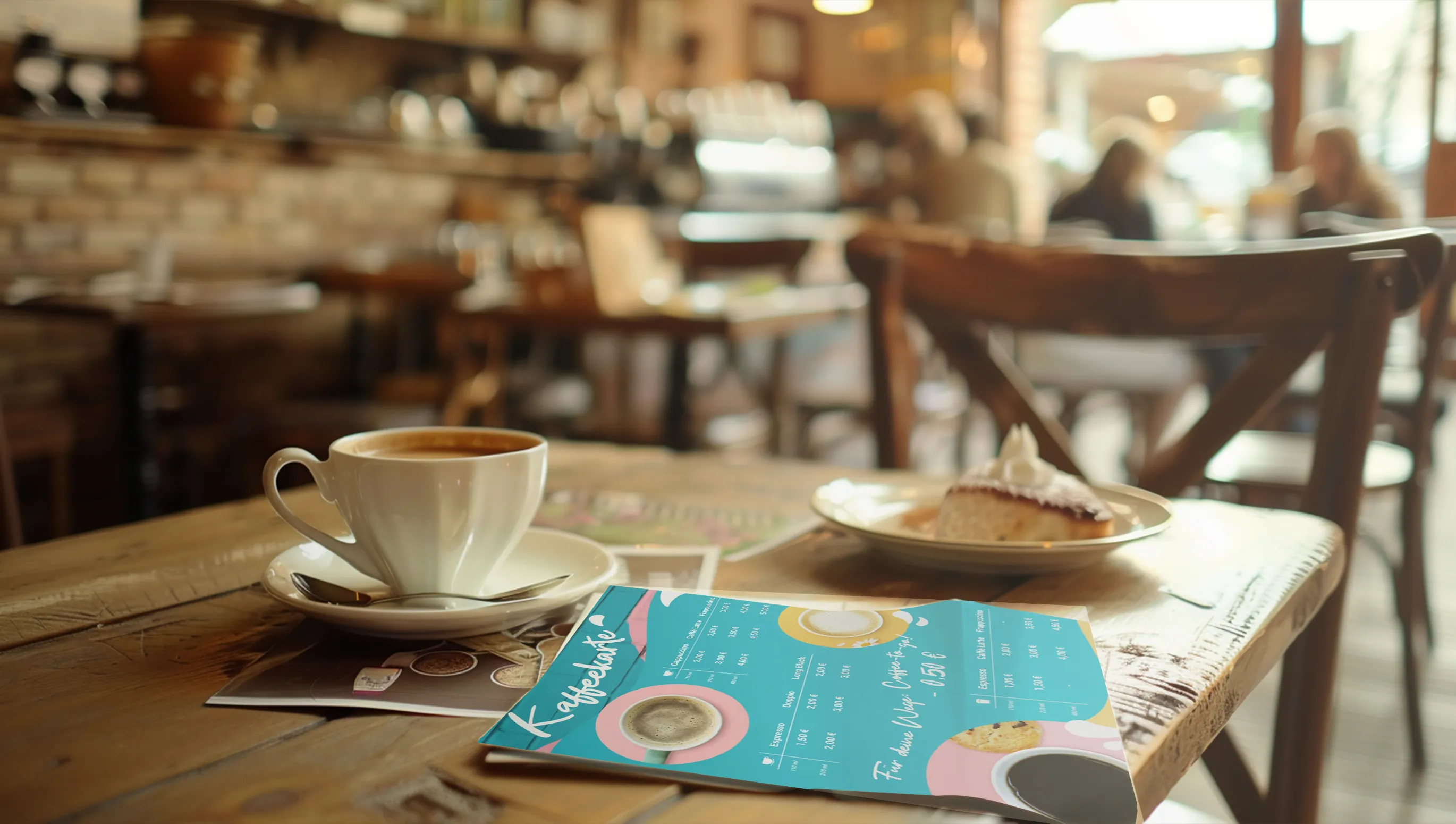Today I'm going to tell you about the five best types of coffee, popular recipes and different ways to prepare it. Are you ready to find out more about coffee and its special features? Let's take a look at which varieties you should try and how to prepare them properly. We discover which methods help to fully develop the taste and aroma of each variety. Let's delve into the world of coffee and uncover its secrets. Let's go!
Starbucks represents something beyond a cup of coffee.
Howard Schultz
Table of contents
Best coffees
The most consumed types of coffee in the world are Arabica and Robusta.
- Arabica (Coffea arabica):
- Accounts for around 60-70% of the world's coffee production.
- Known for its mild and aromatic taste.
- Grown mainly in Latin America, East Africa and parts of Asia.
- Robusta (Coffea canephora):
- Accounts for about 30-40% of the world's coffee production.
- Has a stronger, more bitter taste and contains more caffeine than Arabica.
- Grown mainly in West and Central Africa, South East Asia and Brazil.
But which is considered the best coffee in the world? Choosing just one type of coffee doesn't do justice to the flavorful wonders of other great varieties. So here are our favorites for the best coffees in the world:
Ethiopia Yirgacheffe: This variety impresses with its delicate jasmine flower aroma and pronounced citrus notes. The taste has a berry sweetness and pleasant acidity. The average price is around 30 euros per kilogram.
Kenya AA: Brings a lively acidity, balanced fruitiness and floral notes to your coffee cup. It delights us with the fresh aroma of freshly cut grass and lemon peel. The average price is around 25 euros per kilogram.
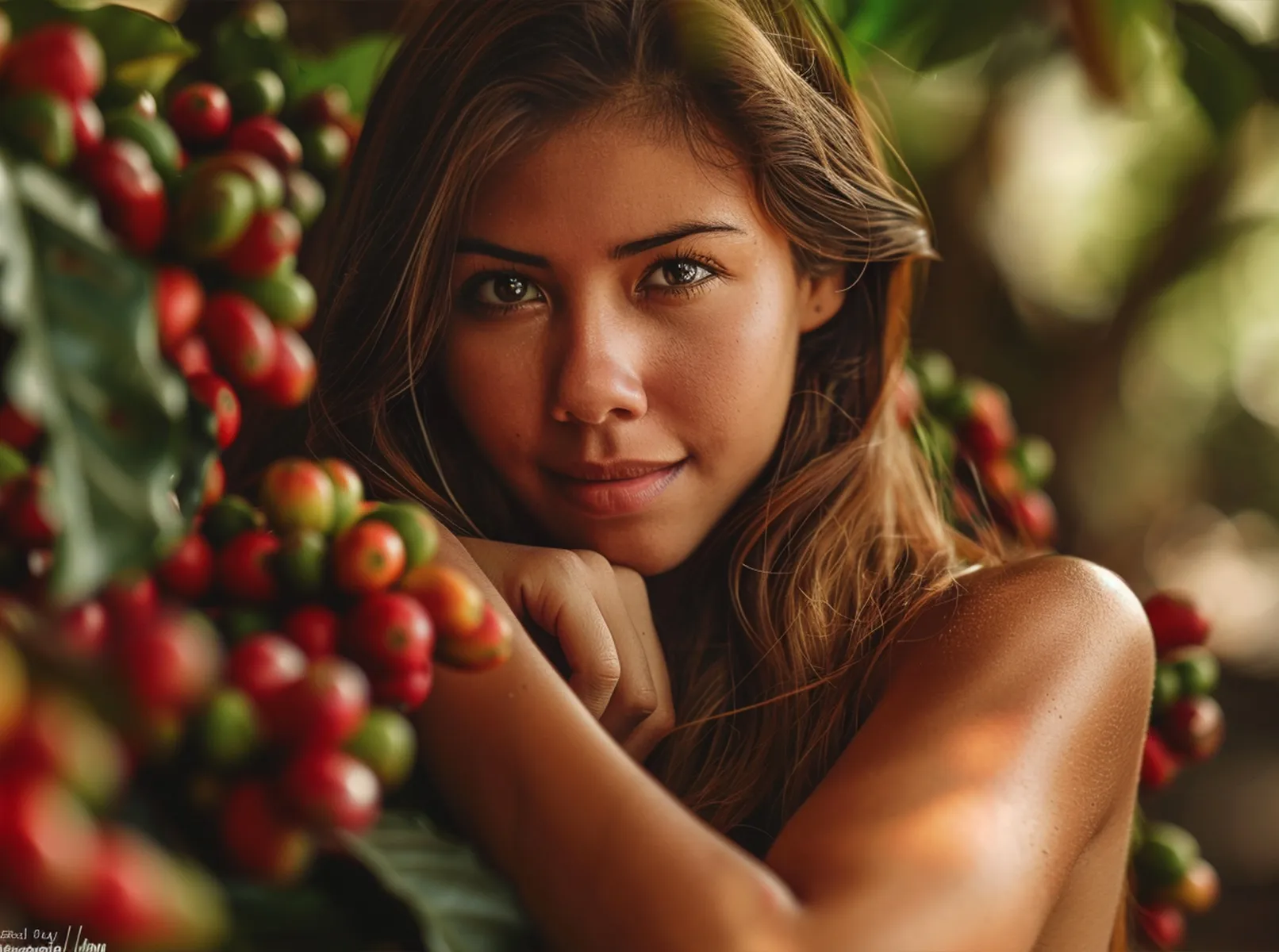
Colombia Supremo: This variety from Colombia surprises us with its smoothness and sweet nuances. In the aroma you can recognize notes of chocolate, caramel and a slight spiciness. The average price is around 20 euros per kilogram.
Java Mocha: This variety from Indonesia impresses with a rich taste that contains subtle notes of tropical fruit, cocoa and wood. Its aroma is filled with delicate vanilla and citrus notes. The average price is around 28 euros per kilogram.
Guatemala Antigua: This variety brings harmony of flavors and aromas to your coffee cup. In the rich taste, you can perceive notes of dark chocolate, spices and sweet cherry. The average price is around 24 euros per kilogram.
Now to the varieties from Brazil, Ecuador, Costa Rica and Tanzania, which will delight you with their variety of flavors and aromas:
Brazil Santos: This variety from Brazil offers a mild, balanced flavor with notes of nuts, chocolate and a slight sweetness. The average price is around 18 euros per kilogram.
Ecuador Vilcabamba: Known for its smooth and aromatic taste, this variety combines notes of caramel, citrus and a subtle spiciness. The average price is around 22 euros per kilogram.
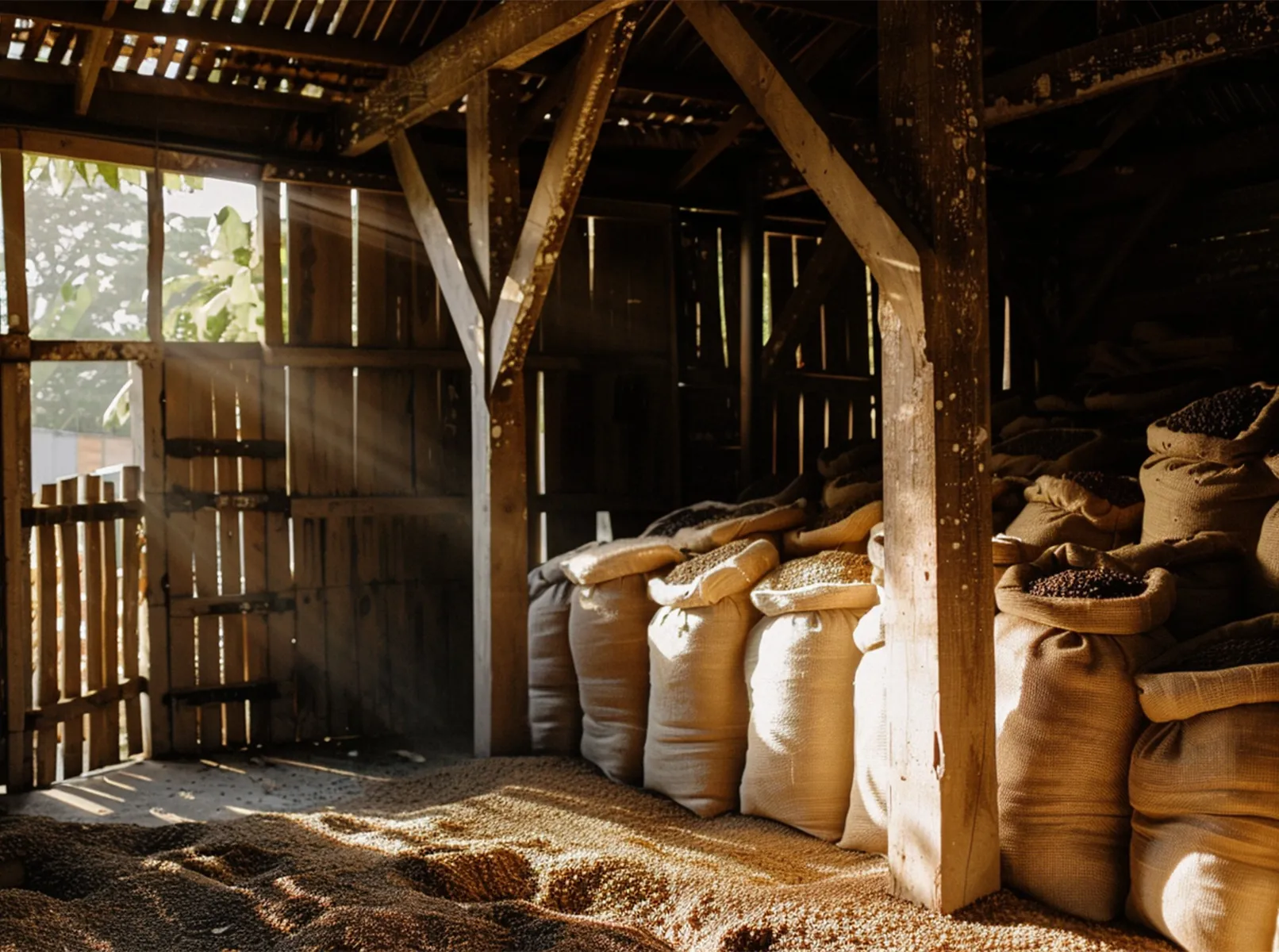
Costa Rica Tarrazu: This variety is characterized by its lively acidity and fruity aromas, accompanied by a pleasant sweetness and a hint of nuts. The average price is around 26 euros per kilogram.
Tanzania Kilimanjaro: With a clear acidity and a strong, full-bodied taste, this variety offers notes of blackcurrant, chocolate and a slight spiciness. The average price is around 23 euros per kilogram.
All of these coffees offer you an incomparable taste and unmistakable aroma. A cup of this wonderful drink will fill you with energy and strength for the whole day.
Science may never come up with a better office communication system than the coffee break.
Earl Wilson
10 popular coffee recipes from around the world
Here are the top 10 most popular specialty coffees from around the world. You will learn how to prepare them and the exciting history of their creation.
Espresso
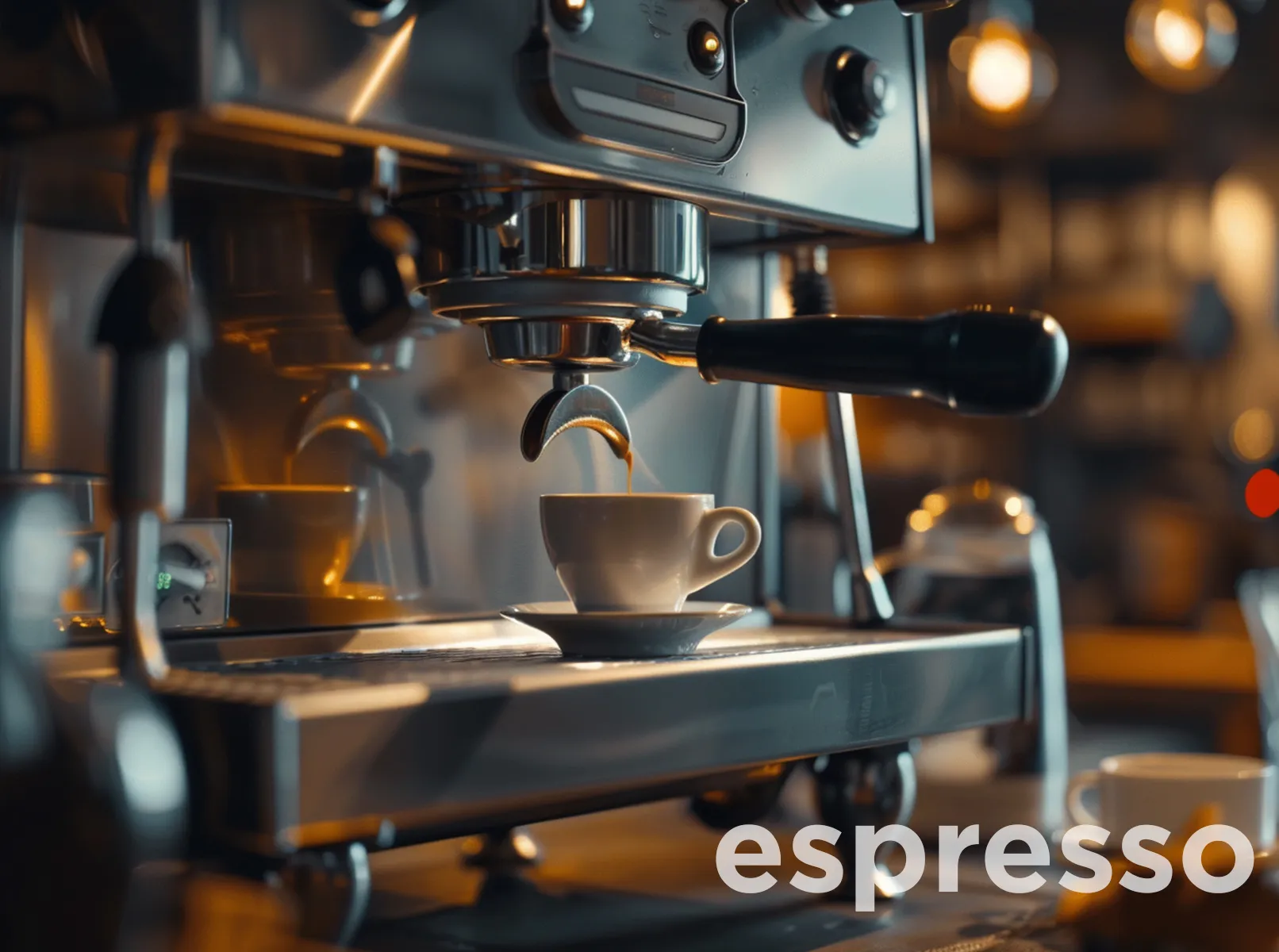
Espresso is a short and strong coffee that was invented in Italy at the end of the 19th century. The origins of espresso date back to the 1880s, when Angelo Moriondo from Turin received the first patent for an espresso machine. Later, in the early 1900s, Luigi Bezzera further developed the machine and made it more practical for commercial use. Desiderio Pavoni's innovations also contributed to making espresso what we know it as today.
Preparation of espresso
A traditional espresso is made by forcing hot water (between 88°C and 96°C) through finely ground coffee beans under high pressure (around 9 bar). A single shot of espresso requires around 7-9 grams of coffee powder and has a volume of around 25-30 ml. The extraction time is between 25 and 30 seconds.
Espresso recipe:
- Grinding: Grind the coffee beans very finely, almost like powdered sugar.
- Tamping: Distribute the coffee powder evenly in the portafilter and press firmly.
- Extraction: Press hot water through the coffee powder at a pressure of around 9 bar.
- Serving: Serve the espresso immediately in a pre-warmed cup.
Special features of espresso preparation
In the mocha pot (caffettiera): In Italy and other countries, espresso is often prepared at home in a mocha pot. Although this method does not generate the high pressure of an espresso machine, it still produces a strong, aromatic coffee.
Turkish preparation: While the Turkish method is traditionally used for mocha, it can also be used for a type of "espresso". Here, finely ground coffee is mixed with sugar and water and slowly heated in a special pot (cezve) until it foams. This method produces a very strong and thick coffee.

Espresso in different countries
- Italy: The motherland of espresso, where it is served in small cups and often drunk at the bar counter. Variants such as ristretto (even more concentrated) and lungo (extended with more water) are also popular.
- Spain: Known as "café solo", espresso is served neat or as a base for "café con leche" (with milk) and "cortado" (with a dash of milk).
- France: Here, espresso is often served as a "petit café" and is very popular in bistros and cafés.
- USA: Espresso is the basis for many popular coffee specialties such as cappuccino, latte and Americano (extended with hot water).
- Australia and New Zealand: Flat white is popular here, an espresso with velvety frothed milk.
Espresso and sugar
Whether espresso is drunk with sugar depends largely on personal preferences and regional traditions. In Italy, espresso is often enjoyed pure to experience the full aroma and taste of the coffee. Nevertheless, it is not uncommon for some coffee lovers to add sugar to balance the natural bitterness and achieve a more pleasant sweetness. In countries such as Spain and Portugal, it is common practice to add sugar to espresso. In France and many other parts of the world, this varies according to individual taste, with sugar often provided at the table so that everyone can decide for themselves. Ultimately, whether you enjoy your espresso with or without sugar is a matter of personal preference.
Espresso and accompaniments
A classic espresso is often served with a glass of water and sometimes a piece of chocolate. The water serves to cleanse the palate and to better perceive the full aroma of the espresso. It is drunk before or after the espresso, depending on preference.
A small piece of chocolate, usually dark chocolate, is often added to complement the bitter notes of the espresso and create a harmonious taste experience. The sweetness and creaminess of the chocolate contrasts wonderfully with the intensity of the espresso and can round off the drinking experience.
These little extras turn the enjoyment of an espresso into a special moment and underline the attention to detail that is cultivated in coffee culture.
Coffee is a language in itself.
Jackie Chan
Latte
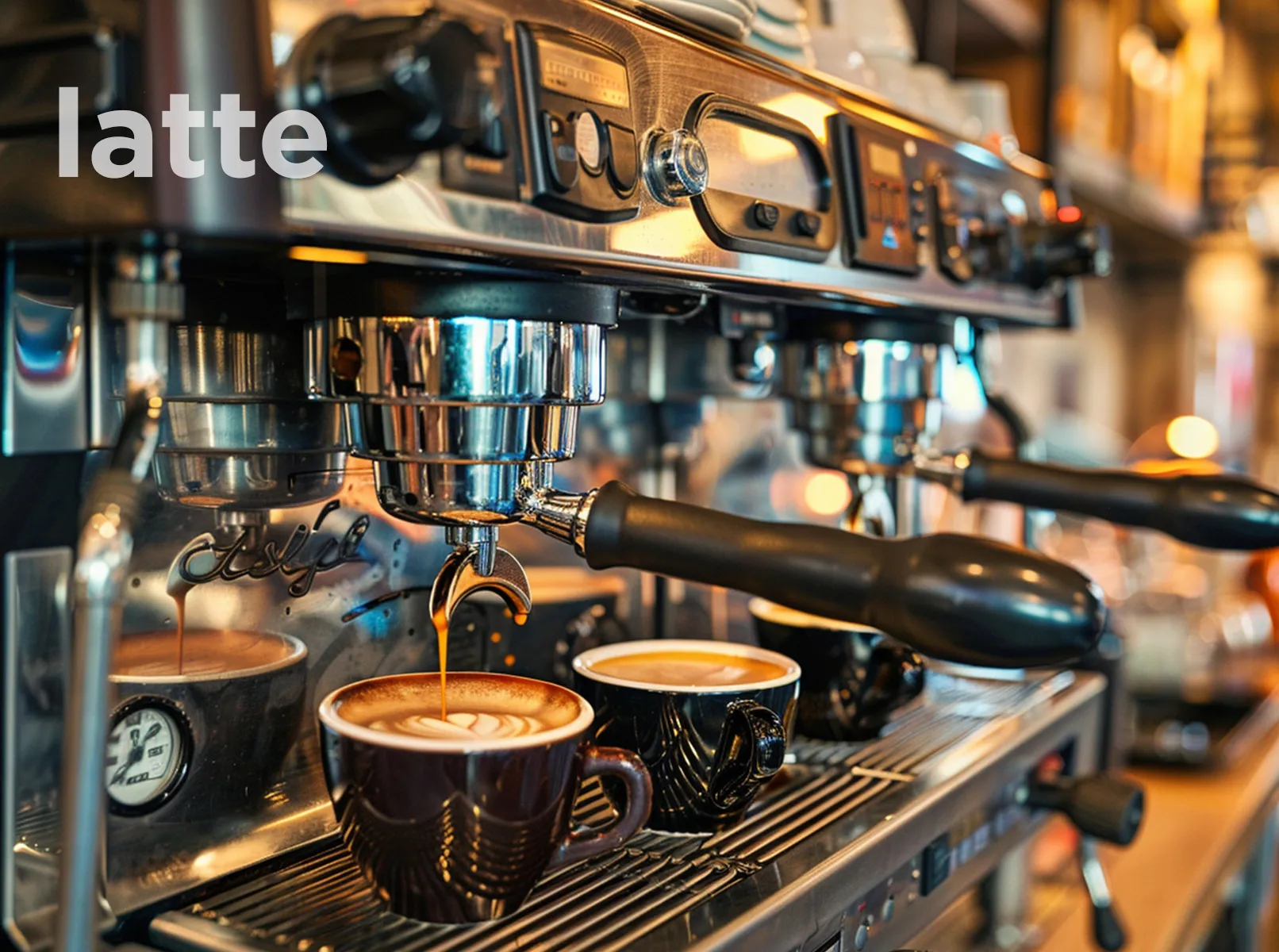
Latte is a popular coffee drink that first emerged in Italy. It consists of espresso and hot milk, with a small dash of milk foam on top. Latte is characterized by its smooth taste and the creamy texture created by the milk foam.
History of the latte
The caffè latte, as it is called in Italy, has its origins in Italian cafés and was traditionally served for breakfast. The term "latte" simply means "milk" in Italian, and in Italy the term is often used as an abbreviation for "caffè latte", i.e. coffee with milk.
Preparation of latte
A traditional latte consists of espresso and hot milk, topped with a small layer of milk foam. Here is a detailed guide to making a perfect latte:
Recipe:
- Make espresso: Start with a shot of espresso (about 30 ml). Use freshly ground coffee beans and an espresso machine to get the best flavor. Pour the espresso into a large cup or glass.
- Select the milk: Whole milk is best for a latte as it produces the creamiest froth. You can also use low-fat milk or plant-based milk alternatives such as soy, almond or oat milk, although the foam may be less stable (but I wouldn't do this).
- Heat the milk: Heat about 150-200 ml of milk to about 65°C. The best way to do this is with a steam nozzle on an espresso machine. Alternatively, you can use a milk frother or a simple handheld device.
- Frothing the milk: Froth the heated milk with the steam nozzle. Hold the nozzle just below the surface of the milk to create small, even bubbles. Move the jug slightly downwards once the milk has expanded to about twice its volume to achieve a velvety, creamy texture.
- Pour in the milk: Slowly pour the frothed milk into the cup with the espresso. First hold the milk jug up to mix the milk into the espresso crema. Then lower the jug to pour the foam onto the top of the drink.
- Add milk foam: Finally, you can add a small amount of froth on top. For latte art, you can try to create patterns such as hearts or leaves with the foam.
Special features of latte preparation in different countries
- USA: Here, the latte is often larger and served with more milk foam. Variants such as the "flavored latte", in which syrups such as vanilla, caramel or hazelnut are added, are very popular.
- France: Known as "café au lait", it is prepared with filter coffee instead of espresso and usually contains more milk.
- Australia and New Zealand: The flat white is similar to the latte, but has less milk foam and is served in a smaller cup.
Serving and enjoying
Lattes are typically served in a large glass or cup. It is perfect for enjoying in the morning or as an afternoon break. Latte art is practiced in many coffee shops, where the milk foam is designed into decorative patterns such as hearts or leaves. Traditionally, latte is drunk without sugar, but you can of course sweeten it to taste.
Latte offers a perfect balance between strong espresso and smooth milk, making it a versatile and popular drink worldwide.
Cappuccino
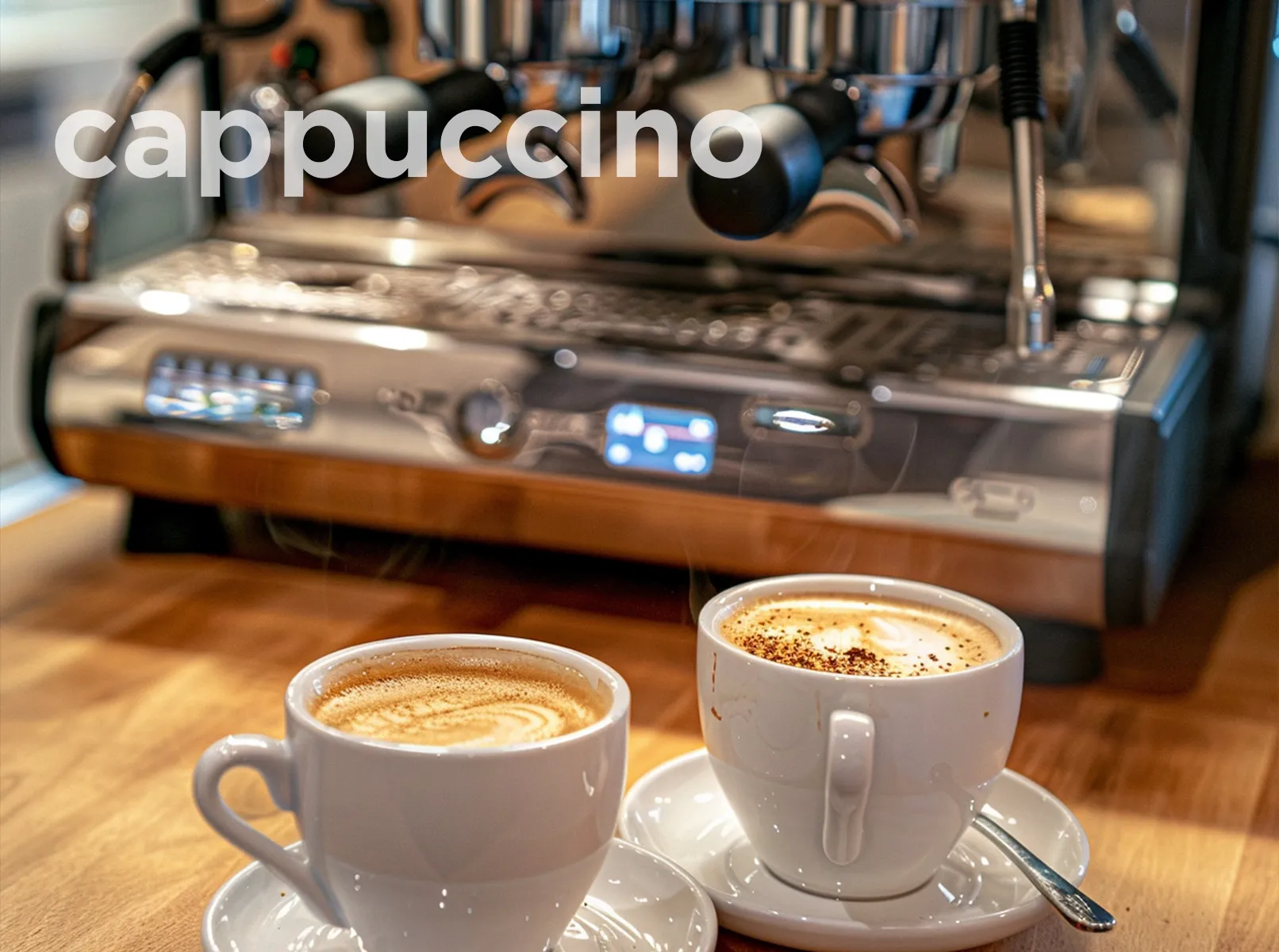
Cappuccino is a coffee drink that also originated in Italy. It consists of equal parts espresso, hot milk and milk foam. The name "cappuccino" is derived from the Capuchin monks, whose robes are a similar color to the drink.
History of the cappuccino
The cappuccino has its roots in the early 20th century, although the original ingredients and preparation methods varied in the decades before. After the Second World War, the cappuccino became popular in Italian cafés and gained worldwide popularity. The modern version we know today came about through the improvement of espresso machines and the art of frothing milk.
Preparation of cappuccino
A perfect cappuccino consists of three equal parts: Espresso, hot milk and milk foam. Here is a detailed guide to making a classic cappuccino:
Recipe:
- Make es presso: Start with a shot of espresso (about 30 ml). Use freshly ground coffee beans and an espresso machine for the best taste. Pour the espresso into a medium-sized cup (about 150-180 ml).
- Heat the milk: Heat about 100 ml of milk to about 65°C. The best way to do this is with a steam nozzle on an espresso machine. Alternatively, you can use a milk frother or a simple handheld device.
- Frothing the milk: Froth the heated milk with the steam nozzle. Hold the nozzle just below the surface of the milk to create small, even bubbles. Move the jug slightly downwards once the milk has expanded to about twice its volume to achieve a velvety, creamy texture.
- Layers: Carefully pour the frothed milk into the cup with the espresso. The aim is to clearly separate the three layers of the cappuccino - espresso, hot milk and milk foam.
- Add the milk foam: Finally, add a thick layer of milk foam on top. Traditionally, the cappuccino is topped with about one centimeter of milk foam.
Variations and serving
Cappuccino is typically served in a medium-sized cup or a small bowl. There are different variations, depending on preferences and regional differences:
- Dry Cappuccino: Less milk and more milk foam.
- Wet Cappuccino: More milk and less milk foam.
- Flavored Cappuccino: Flavored with syrups such as vanilla, caramel or chocolate.
Cappuccino worldwide
- Italy: Cappuccino is traditionally only drunk in the morning and rarely after 11 am. Italians often enjoy it with a cornetto (Italian croissant).
- USA: Here, cappuccino is often consumed throughout the day and there are many variations with different flavors and types of milk.
- Australia and New Zealand: The cappuccino is very similar to the flat white, but is served with more milk foam.
Sugar in cappuccino
Whether you add sugar to your cappuccino is a matter of personal taste and varies from person to person. In Italy, cappuccino is often drunk without sugar in order to enjoy the full flavor of the espresso and the creaminess of the milk. However, in other countries, such as the USA or France, it is common practice to add sugar or other sweeteners to round off the taste of the coffee. Some connoisseurs also add cocoa powder or cinnamon to give the cappuccino an extra flavor. Ultimately, everyone decides for themselves whether and how much sugar to add to their cappuccino to create the perfect moment of indulgence.
Mocha
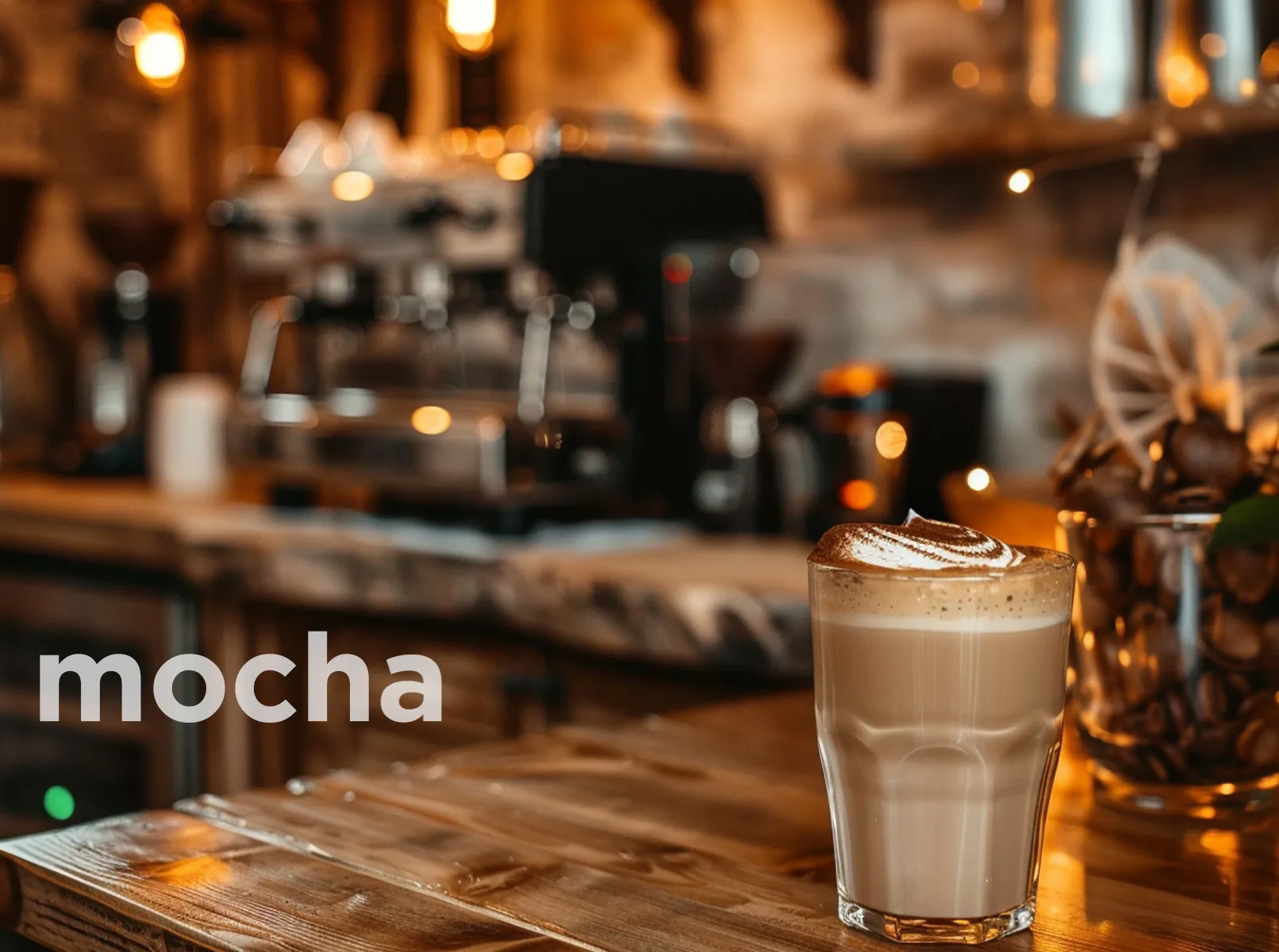
Mocha is a coffee drink that was originally created in Italy and later gained popularity worldwide. It consists of espresso, chocolate syrup and milk. Mocha is characterized by its rich chocolate taste and aroma, which makes it an ideal choice for lovers of sweet coffee drinks.
"Mocha", "Mocca" or "Mocha" - What is the correct name?
The terms "mocha", "mocha" and "mocha" are often used interchangeably, but all three terms have their own history and regional differences. "Mocha" is the German spelling and refers to the classic coffee drink and the Arab city of Al-Makha, which was famous for its coffee in the 15th and 16th centuries. "Mocca" is an alternative spelling that is often found in older European texts. "Mocha" is the English variant and is mainly used in the USA. In Italy, the drink is often called "Caffè Mocha", while in France it is known as "Moka". In Spain, it is called "café mocha" or "moca". Regardless of the spelling, the taste and the blend of coffee and chocolate remains the same, and each variant has its fans around the globe.
History of the mocha
The name "mocha" is derived from the Yemeni port of Al-Makha, which was an important center of the coffee trade in the 15th and 16th centuries. However, the modern version of mocha that we know today originated in Italy, where espresso and chocolate were combined to create this delicious drink. Since then, mocha has spread around the world and has been adapted into different variations and recipes.
Preparation of mocha
A mocha is typically prepared with a shot of espresso, chocolate syrup and frothed milk. Here is a detailed guide on how to make a classic mocha:
Recipe:
- Make espresso: Start with a shot of espresso (about 30 ml). Use freshly ground coffee beans and an espresso machine for the best flavor. Pour the espresso into a large cup or glass.
- Add chocolate syrup: Add about 1-2 tablespoons of chocolate syrup to the cup with the espresso and stir well until the syrup has completely dissolved. Alternatively, you can also use cocoa powder, which you mix with a little sugar and hot water to make a paste.
- Heat the milk: Heat around 150-200 ml of milk to around 65°C. The best way to do this is with a steam nozzle on an espresso machine. Alternatively, you can use a milk frother or a simple handheld device.
- Frothing the milk: Froth the heated milk with the steam nozzle to achieve a creamy texture. Make sure to achieve a good balance between hot milk and milk foam.
- Mixing: Slowly pour the frothed milk into the cup with the espresso and chocolate syrup so that the liquids mix well.
- Garnish: You can garnish the mocha with whipped cream and additional chocolate chips or cocoa powder to give it an extra sweet touch.
Variations and serving
Mocha can be prepared in different variations, depending on preferences and regional differences:
- White Chocolate M ocha: With white chocolate syrup instead of dark.
- Peppermint mocha: With a dash of peppermint syrup for a Christmassy touch.
- Iced mocha: A refreshing variation with ice cubes and cold milk.
Sugar in mocha
Mocha is naturally sweeter than other coffee drinks due to the chocolate syrup. This is why many people do not add any extra sugar. However, if you like it particularly sweet, you can of course add sugar to taste. In cafés, mocha is often served with whipped cream and chocolate sprinkles, which further enhances the sweetness.
A mocha offers the perfect combination of strong espresso and sweet chocolate, making it a popular drink for those with a sweet tooth and coffee lovers alike.
Flat White
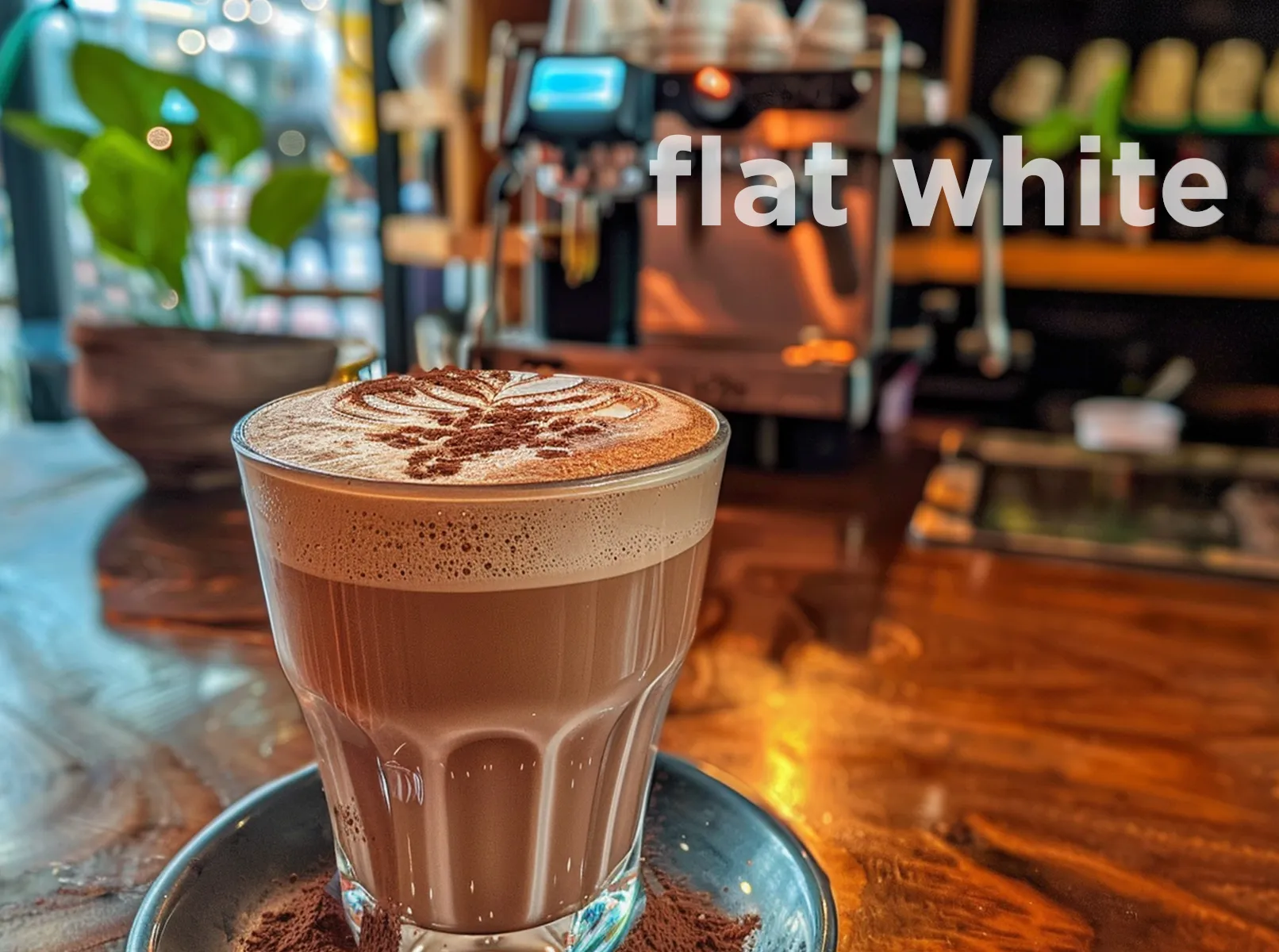
Flat White is a comparatively new coffee drink that was created in Australia in the 1980s. It consists of espresso and hot milk, but without the usual layer of milk foam found in a latte. This gives the drink a "flat" appearance, making it an ideal choice for those who prefer a more balanced coffee flavor.
History of the Flat White
The Flat White was created in response to the growing popularity of espresso-based drinks in Australia and New Zealand. It was intended to offer an alternative to cappuccino and latte, with a stronger coffee taste and less milk foam. Today, the flat white can be found in many cafés around the world and enjoys great popularity.
Preparation of flat white
A perfect flat white consists of a double espresso and micro-foamed milk. Here are detailed instructions on how to prepare a classic flat white:
Recipe:
- Prepare double espresso: Start with a double shot of espresso (about 60 ml). Use freshly ground coffee beans and an espresso machine for the best flavor. Pour the espresso into a medium-sized cup (about 150-180 ml).
- Heat the milk: Heat about 120-150 ml of milk to about 65°C. The best way to do this is with a steam nozzle on an espresso machine. Alternatively, you can use a milk frother or a simple handheld device.
- Create microfoam: Froth the heated milk with the steam nozzle. Hold the nozzle just below the surface of the milk to create a fine, velvety microfoam without forming large bubbles. The consistency should be creamy and thick.
- Pour in the milk: Slowly pour the micro-foamed milk into the cup with the double espresso. Start pouring from a height to mix the milk into the crema of the espresso, then lower the jug to pour the microfoam evenly over the top of the drink.
Variations and serving
The flat white is typically served in a smaller cup than a latte to balance the ratio of coffee to milk. There are different variations, depending on preferences and regional differences:
- Strong Flat White: with an additional shot of espresso for a more intense flavor.
- Flavored Flat White: Flavored with syrups such as vanilla, caramel or hazelnut.
Flat White worldwide
- Australia and New Zealand: Here, the flat white enjoys cult status and is regarded as the epitome of a well-made coffee drink.
- Europe: In many European countries, the flat white has found its way onto café menus and is becoming increasingly popular.
- USA: The flat white was popularized by large coffee chains such as Starbucks and is now a common choice among coffee lovers.
Sugar in flat white
The flat white is often drunk without sugar to enjoy the full flavor of the espresso and the creamy texture of the milk. However, anyone can add sugar to suit their personal taste. Most cafés also offer alternative sweeteners such as stevia or agave syrup.
A flat white offers an intense coffee experience with a creamy texture, perfect for those who prefer a strong coffee with a smooth milk note.
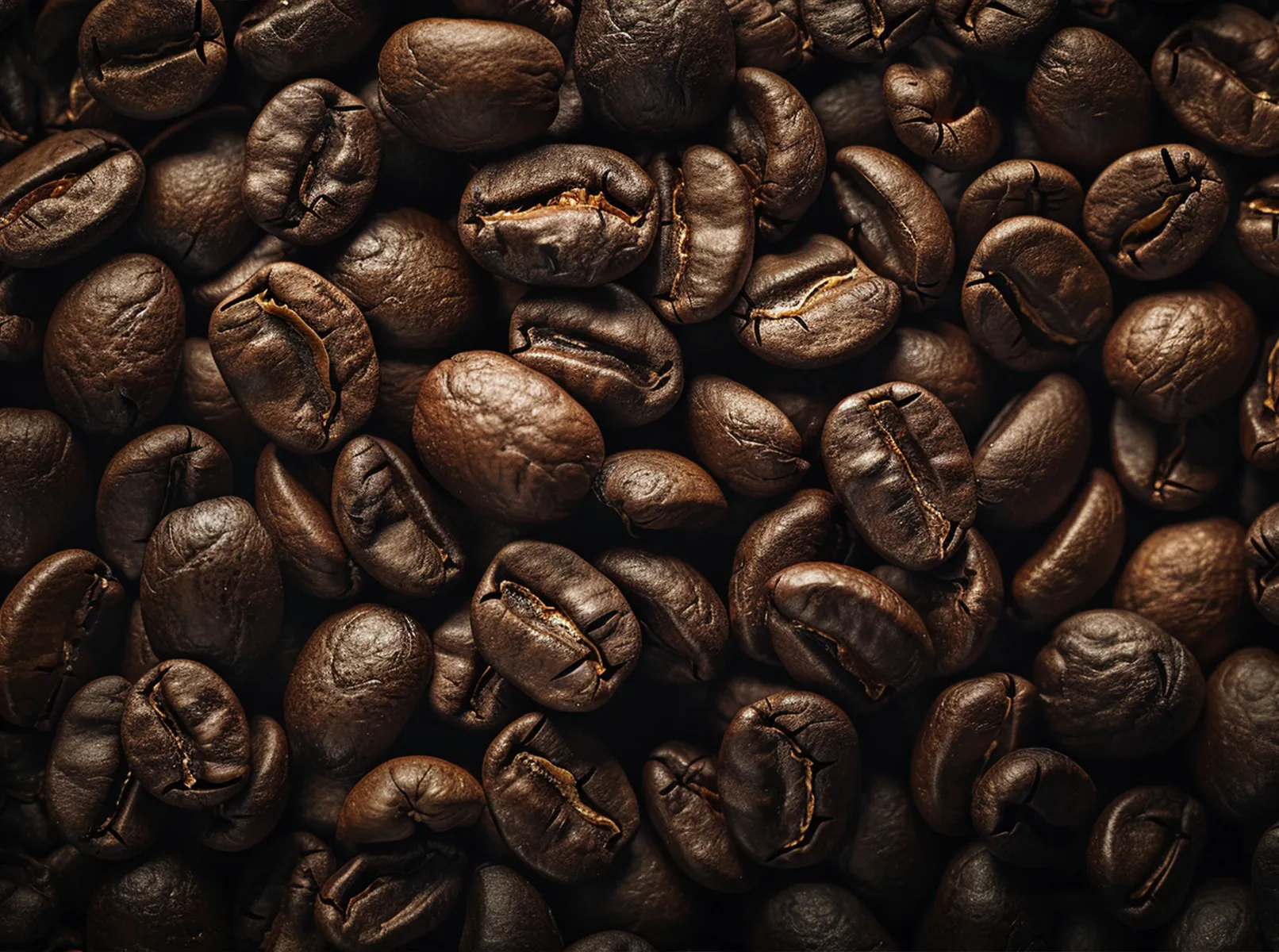
Coffee beans for flat white
High-quality Arabica beans are generally used to prepare an excellent flat white. These beans offer a rich and complex taste that harmonizes well with the velvety texture of the micro-foamed milk. Popular Arabica varieties come from growing regions such as Ethiopia, Colombia, Brazil and Sumatra, each with their own characteristic aromas and notes.
Americano
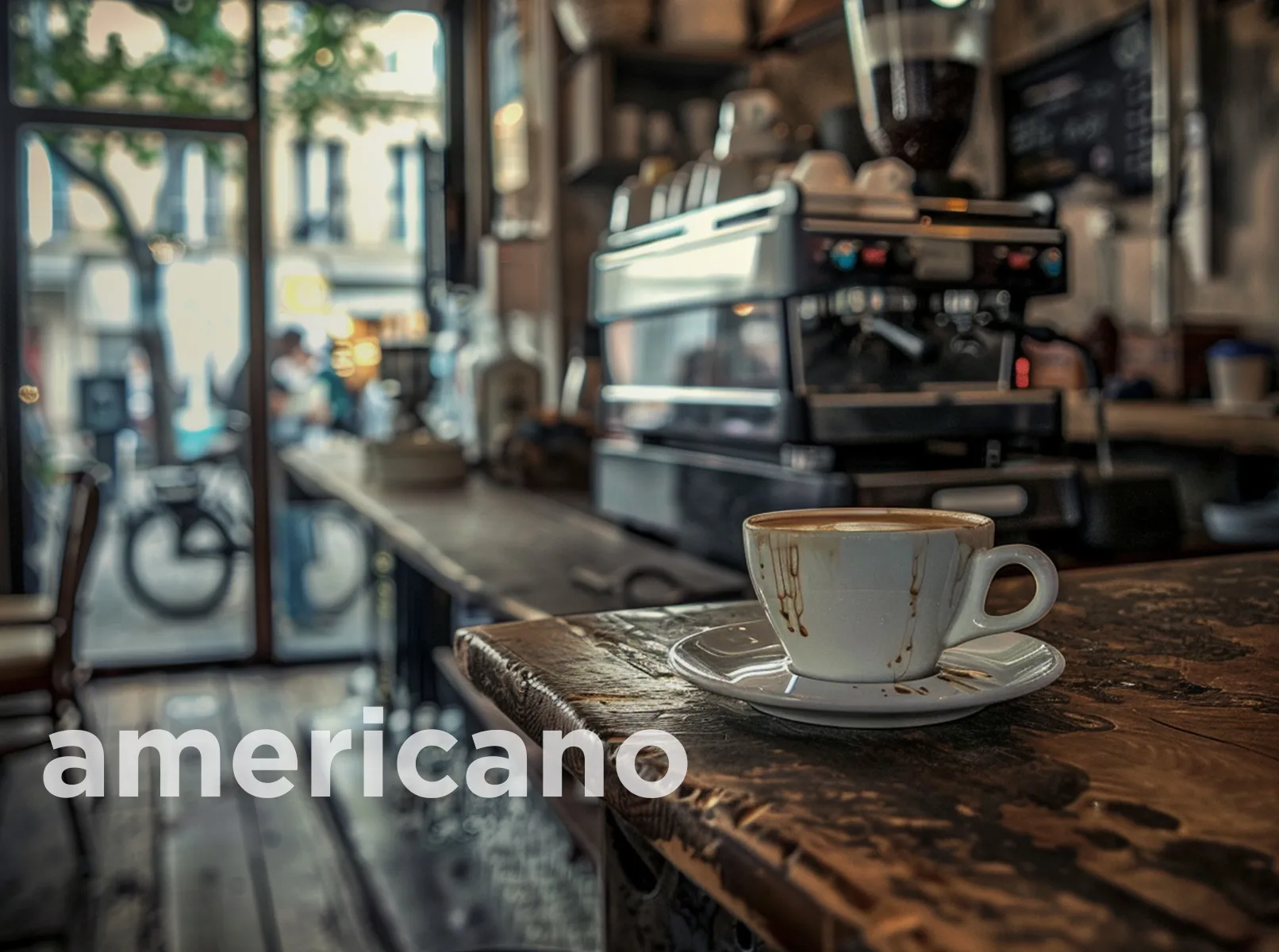
Americano is a coffee drink that was invented by American soldiers in Italy during the Second World War because they lacked the American coffee they were used to. It is made by adding hot water to an espresso, which makes it less strong and more intense than a pure espresso.
History of the Americano
The name "Americano" is derived from the American soldiers who were stationed in Italy and wanted to tone down the strong espresso there. By adding hot water, they created a drink that resembled their usual filter coffee. This practice quickly became popular and found its way into cafés all over the world.
Preparation of Americano
An Americano is easy to prepare and consists of two main ingredients: Espresso and hot water. Here is a step-by-step guide:
Prepare the espresso: Prepare a single or double espresso (30-60 ml) and pour it into a large cup.
Add hot water: Pour hot water into the cup with the espresso, depending on the desired strength of the drink. The ratio of water to espresso can vary:
- 1:1: Equal amount of water and espresso for a stronger Americano.
- 1:2: Twice the amount of water for a milder taste.
- 1:4: Four times the amount of water for an even lighter coffee.
The more water you add, the less intense the Americano will be.
Variations and serving
An Americano can vary depending on preferences and regional differences. In some countries it is served with milk or sugar, while in others it is enjoyed plain. In the USA, it is common for the Americano to be slightly weaker, while in Europe it tends to remain stronger.
Sugar in Americano
Whether sugar is added to the Americano depends on individual taste. Many enjoy it without sugar to preserve the pure coffee flavor, while others add a small amount of sugar to round out the bitterness of the espresso.
Americanos in Italian cafés
In many Italian cafés, the Americano is now a common offering, especially in areas with many tourists. Although it does not enjoy the same recognition as espresso, it is a popular choice for those who prefer a longer, less intense coffee. Italian baristas prepare it with the same care and quality as all other specialty coffees.
Raf
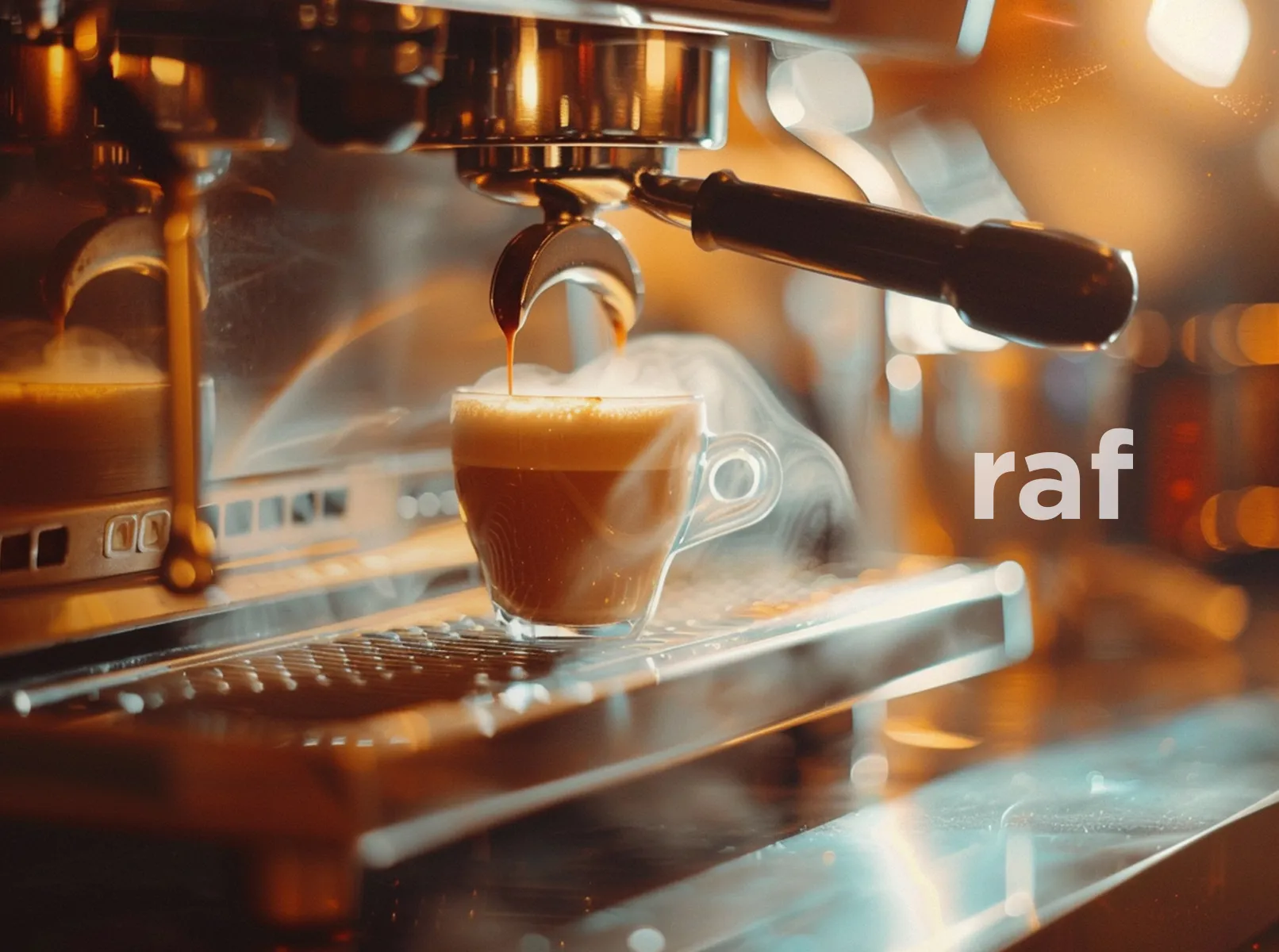
Raf is an Israeli coffee drink consisting of espresso, hot milk and vanilla syrup, garnished with cinnamon or chocolate shavings. This drink has a sweet and aromatic taste that is perfectly complemented by the vanilla notes.
History of the Raf
Raf originated in Israel and has become a popular drink in many cafés in recent decades. Its exact origins are not fully documented, but it is often seen as a modern addition to the coffee variety that stands out from traditional recipes and offers a sweeter alternative to classic coffee drinks.
Preparation of Raf
Preparing a Raf is simple, but requires a few special ingredients to achieve the characteristic taste. Here is a step-by-step guide:
- Prepare the espresso: Prepare a single or double espresso (30-60 ml) and pour it into a medium-sized cup.
- Heat the milk: Heat about 120-150 ml of milk to about 65°C. Use a steam nozzle or a milk frother to make the milk velvety and hot.
- Add vanilla syrup: Add 1-2 tablespoons of vanilla syrup to the hot milk and stir well.
- Mix espresso and milk: Pour the hot milk with the vanilla syrup into the cup with the espresso and stir until everything is well mixed.
- Garnish: Sprinkle a pinch of cinnamon or chocolate shavings over the drink to give it an extra touch of flavor.
Variations and serving
Raf can be adapted according to preferences and regional differences. Some cafés also offer variations with other syrups or additional flavors. Here are some options:
- Caramel Raf: Replace the vanilla syrup with caramel syrup for a richer sweetness.
- Chocolate raf: Add some cocoa powder to the hot milk for a more chocolatey taste.
Raf worldwide
Although raf is popular in Israel, it has also made a name for itself in other parts of the world. It is offered in many international cafés as an exotic and delicious alternative to traditional coffee drinks.
Sugar in Raf
Raf is naturally sweet due to the vanilla syrup, so additional sugar is not usually necessary.
Raf is a delicious and aromatic coffee drink that makes a wonderful addition to any coffee moment. Whether as a morning treat or a sweet break in the afternoon, Raf adds a special touch to coffee enjoyment.
Macchiato
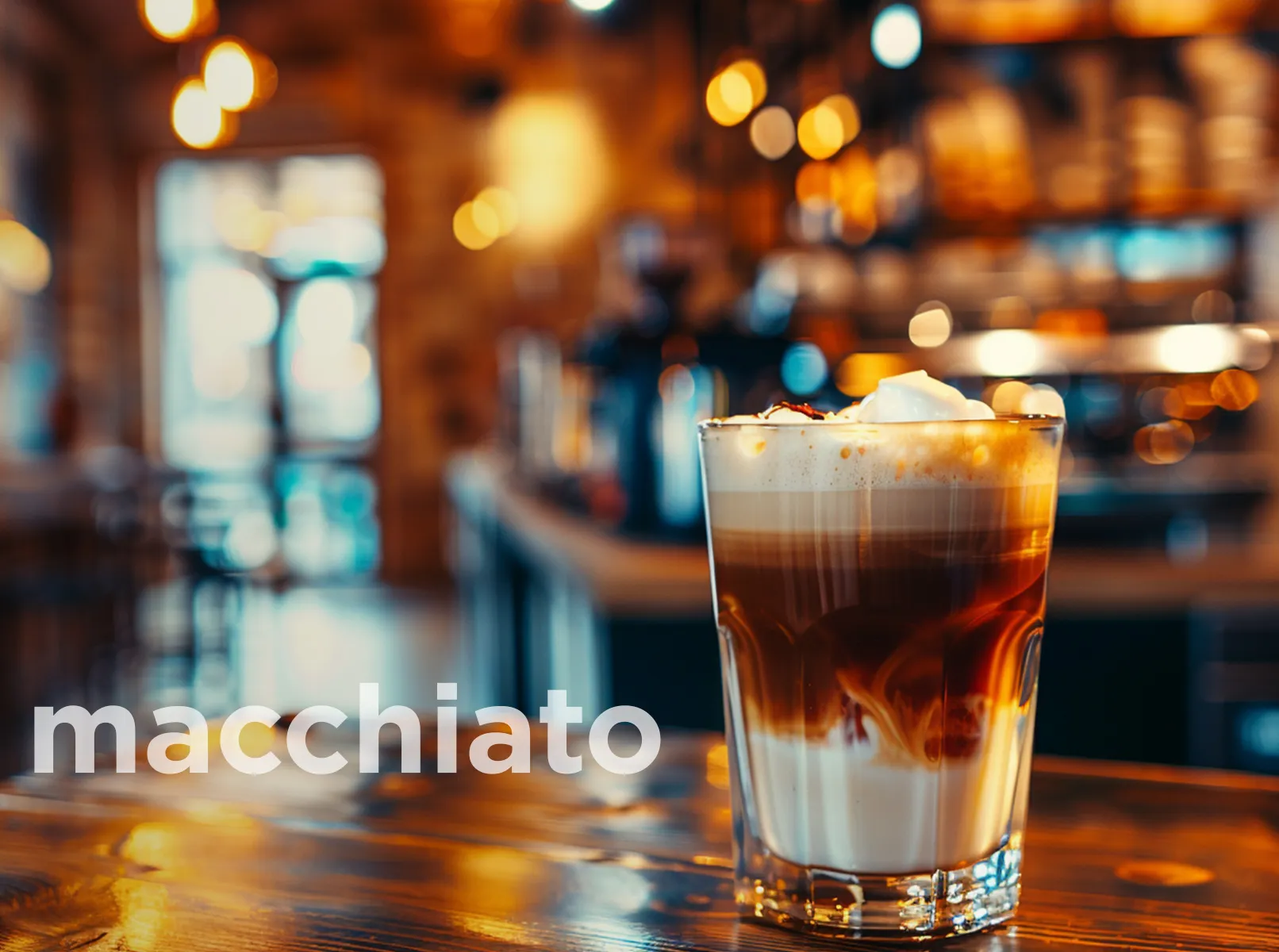
Macchiato is a small and strong coffee that was developed in Italy. It consists of a single espresso and a small amount of milk foam. Macchiato has an intense coffee flavor that is complemented by delicate milk notes.
History of the macchiato
The name "macchiato" means "spotted" or "marked" in Italian and refers to the way in which the espresso is "marked" by the milk foam. This method originated in Italy to create a clear distinction between a simple espresso and a coffee with milk. The macchiato was developed to retain the intense flavor of the espresso while adding a subtle creaminess.
Preparation of macchiato
Preparing a macchiato is simple and requires only a few ingredients. Here is a step-by-step guide:
- Prepare the espresso: Prepare a single espresso (30 ml) and pour it into a small espresso cup.
- Make milk foam: Heat a small amount of milk (about 20-30 ml) and froth it until it reaches a creamy consistency.
- Add milk foam: Add a small spoonful of milk foam to the espresso so that the foam lightly covers and "marks" the coffee.
Variations and serving
The macchiato can be varied according to preferences and regional differences. Here are some common variations:
- Latte Macchiato: In this version, the milk is first poured into a glass and then a shot of espresso is added, leaving the layers of milk and coffee visible.
- Caramel macchiato: This sweeter version also contains caramel syrup and is often garnished with caramel sauce.
Macchiato worldwide
The macchiato has different interpretations in different countries. In the USA, for example, the caramel macchiato from Starbucks is very popular, a sweeter and larger version of the classic Italian macchiato.
Sugar in the macchiato
Whether sugar is added to the macchiato depends on individual taste. Many prefer it without sugar to enjoy the pure taste of the espresso and the delicate milk foam. Others add a small amount of sugar to soften the bitterness of the espresso.
The macchiato is a perfect choice for coffee lovers who want to enjoy an intense espresso flavor with a hint of creaminess.
Fluffy
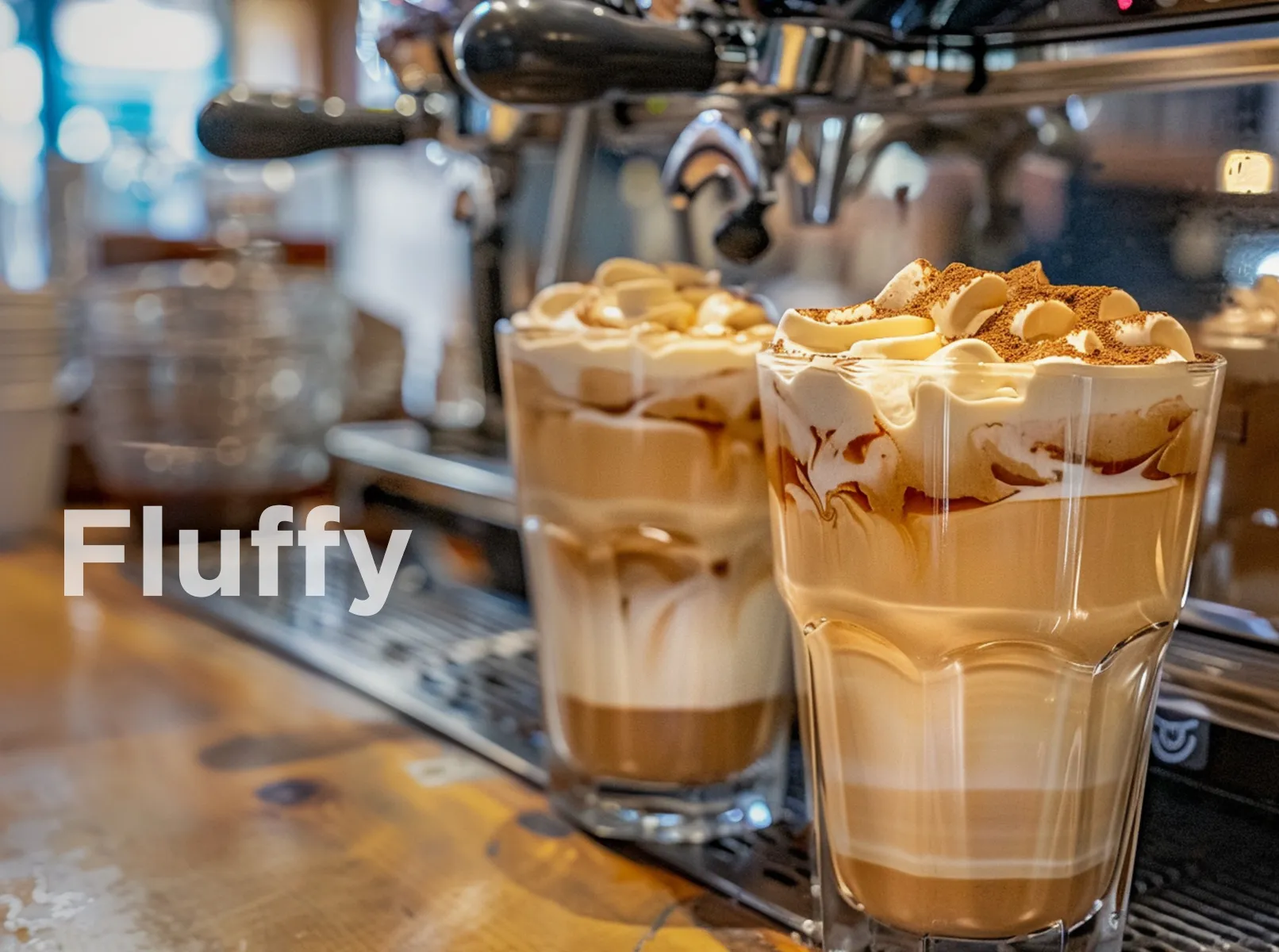
Fluffy is a fun and delicious drink that is perfect for cozy afternoons or special occasions. It is proof of how creativity and simplicity can lead to something very special.
Fluffy is a creative coffee drink that has gained popularity through social media. It emerged in recent years and quickly won the hearts of coffee lovers thanks to its unusual appearance and ease of preparation. Fluffy consists of equal parts instant coffee, sugar and hot water, whipped with a hand mixer to an airy, frothy texture. This fluffy coffee foam is poured over cold milk or whipped cream and produces a rich coffee drink with a pleasant head of foam.
History of the Fluffy
Although the exact origin of the Fluffy is not clear, it is often pointed out that it went viral during the COVID-19 pandemic in 2020 when people were looking for creative ways to prepare their favorite drinks at home. The Fluffy became popular on platforms such as TikTok and Instagram, where users shared videos of their preparation.
Preparation of Fluffy
Preparing a Fluffy is simple and requires only a few ingredients. Here is a step-by-step guide:
- Prepare ingredients: Mix 2 tablespoons each of instant coffee, sugar and hot water in a bowl.
- Whisk: Beat the mixture with a hand mixer or a whisk until it reaches a thick, frothy consistency. This will take about 3-5 minutes.
- Serve: Fill a glass about two-thirds full with cold milk or whipped cream. Spoon the whipped coffee foam on top so that it forms a nice, thick layer.
Variations and serving
The Fluffy can be adapted according to preferences and regional differences. Here are some common variations:
- Vanilla Fluffy: Add a teaspoon of vanilla extract to the mixture before whipping for a hint of vanilla.
- Cocoa Fluffy: Sprinkle some cocoa powder over the finished Fluffy to add a chocolatey note.
Fluffy worldwide
The Fluffy has become popular worldwide and is enjoyed in many countries. Although the basic ingredients remain the same, different cultures adapt the recipe to their own taste preferences.
Sugar in Fluffy
Fluffy is traditionally made with sugar, which gives it its characteristic sweetness and frothy texture. If you prefer it less sweet, you can reduce the amount of sugar or use alternative sweeteners.
Rüdesheim coffee
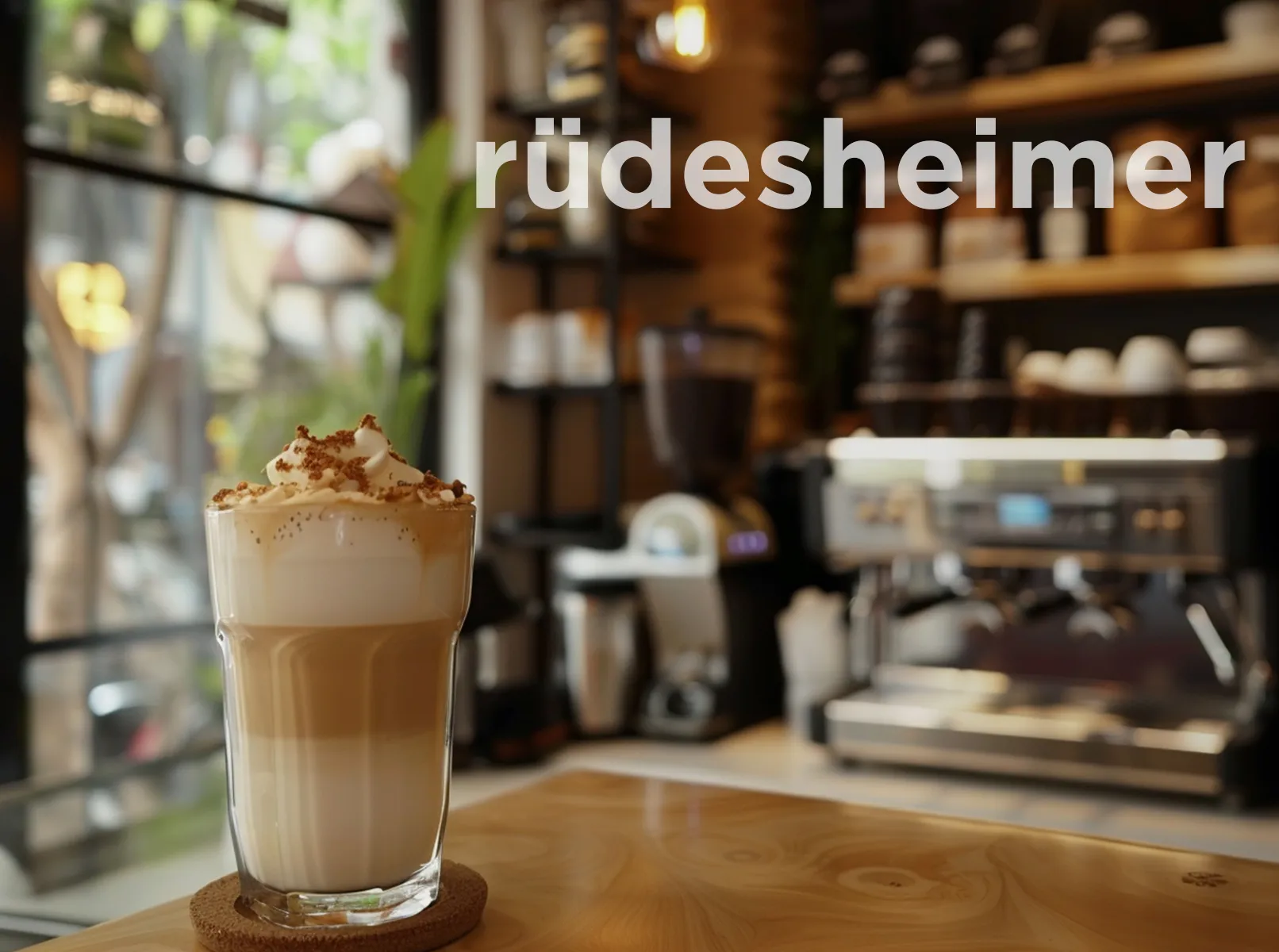
Rüdesheimer Kaffee is a coffee drink that was invented in the 1950s and quickly gained popularity in Germany. This delicious drink combines fresh coffee, milk and chocolate to create an aromatic and rich beverage that is perfect for an invigorating start to the day.
History of Rüdesheim coffee
Rüdesheimer Kaffee was created by Hans Karl Adam, a German television chef. Named after the town of Rüdesheim am Rhein, where it was first prepared, this drink has its roots in the tradition of refining coffee with spirits and sweet ingredients.
Preparation of Rüdesheim coffee
Preparing Rüdesheimer Kaffee is quick and easy. Here is a step-by-step guide:
- Prepare the ingredients: You'll need fresh hot coffee, milk and chocolate chips or syrup.
- Mix coffee and milk: Pour a cup of hot coffee into a large mug or glass and add about 50 ml of hot milk.
- Add chocolate: Add a tablespoon of chocolate shavings or a dash of chocolate syrup and stir well until the chocolate has completely melted and mixed with the coffee and milk.
- Garnish: For extra flavor and an appealing look, you can garnish the drink with a pinch of cocoa powder or more chocolate shavings.
Variations and serving
Rüdesheimer coffee can be adapted in different ways to achieve different flavors. Here are some popular variations:
- With cream: Add a layer of whipped cream to give the drink an extra creamy texture.
- With spirits: For a grown-up version, you can add a shot of liqueur, such as Amaretto or Kahlúa.
Rüdesheim coffee worldwide
Although Rüdesheim coffee originated in Germany, it has also found an international following. Especially in cafés and restaurants that focus on European specialties, this drink is an integral part of the menu.
Sugar in Rüdesheim coffee
Rüdesheimer Kaffee already contains a certain amount of sweetness due to the chocolate, but additional sugar can be added depending on personal taste. The chocolate can also be replaced with various syrups or sweeteners to customize the taste.
Special features of Rüdesheim coffee
A special feature of Rüdesheimer coffee is the combination of coffee, milk and chocolate, which gives it a unique depth of flavor. This blend not only makes the drink particularly aromatic, but also pleasantly sweet and rich, making it a popular treat at any time of day.
Different ways to prepare coffee
I'll tell you about different ways to prepare coffee. You will learn more about each method, its history and special features.
Classic brewing
Classic brewing is one of the simplest methods of making coffee. The coffee beans are brewed in hot water and then filtered to remove the grounds. This method has ancient roots and became popular due to its simplicity and accessibility.
Advantages: Simplicity, accessibility.
Disadvantages: Time consuming, no temperature control.
Aeropress
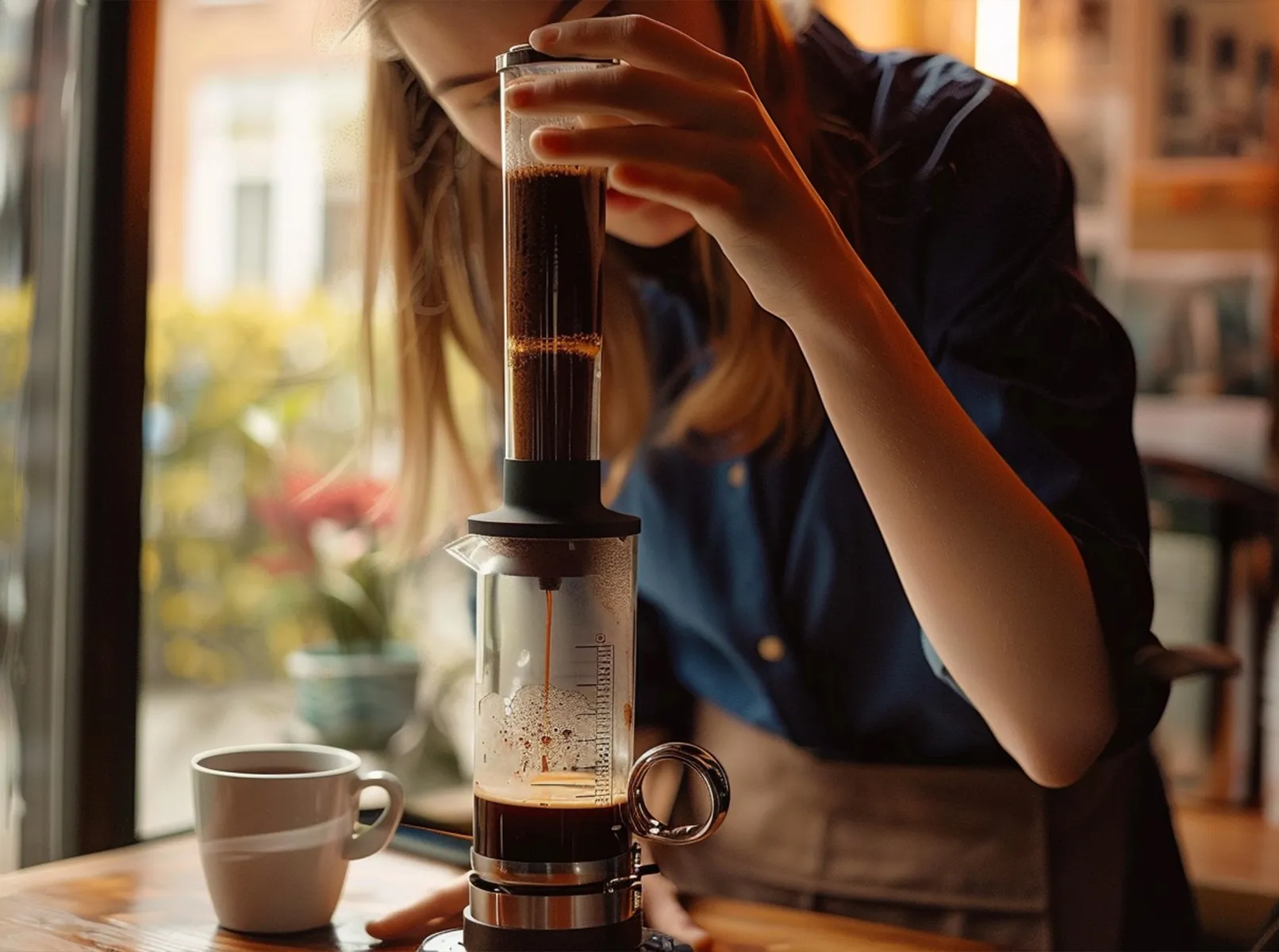
The Aeropress method offers a more intense taste and aroma. The coffee is placed in a special cylinder and pressed through a filter under pressure. The Aeropress became famous in 2005 when it was invented by US engineer Alan Adler. This method is popular with coffee lovers because of its simplicity and the ability to prepare high-quality coffee.
Advantages: Intense flavor, portability.
Disadvantages: Requires some practice to use correctly.
Coffee maker
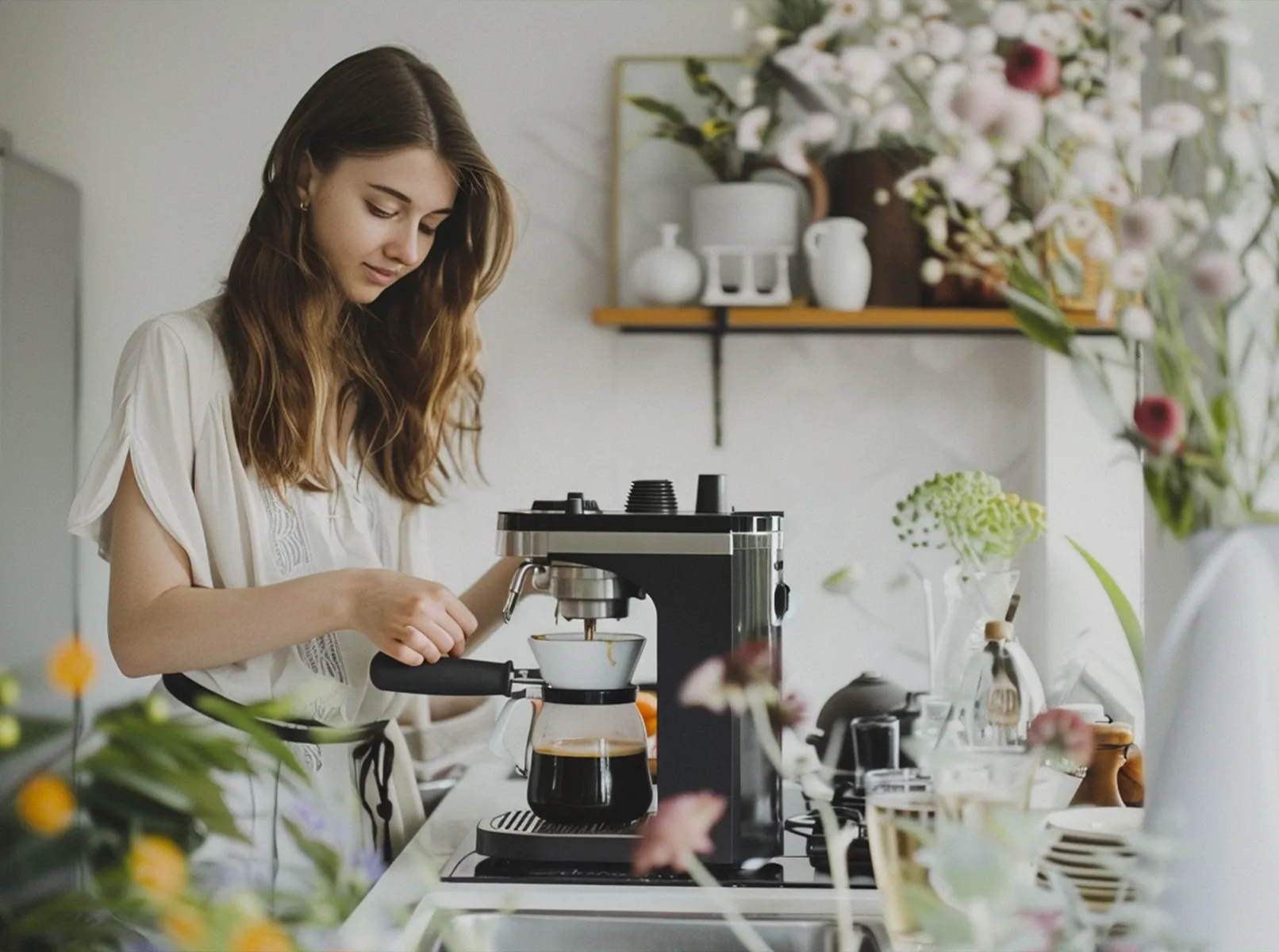
The coffee machine is an automated method that ensures a consistent quality of coffee. The coffee beans are ground and brewed under pressure. This method became widespread at the end of the 19th century with the advent of the first coffee machines. It offers a quick and convenient way to prepare coffee, especially for catering establishments.
Advantages: Automation, consistent quality.
Disadvantages: Expensive, requires special equipment.
French Press
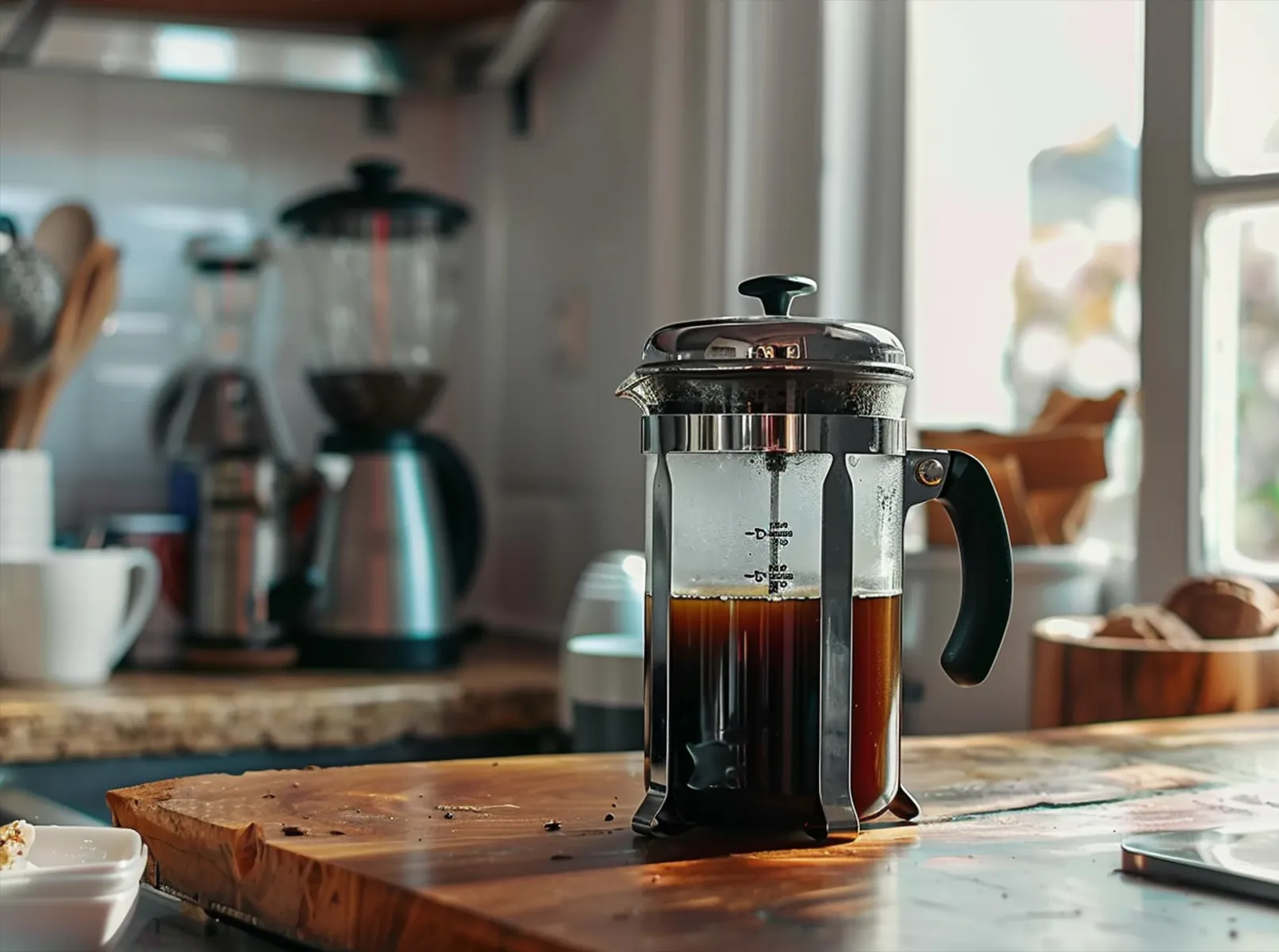
The French Press is an easy-to-use method that produces a strong drink. The coffee is brewed in hot water and the grounds are separated with a plunger. The French Press was invented by a French engineer in 1929. It allows you to enjoy the full flavor of coffee without using a filter, making it popular with coffee lovers.
Advantages: Strong flavor, easy to use.
Disadvantages: Possible presence of coffee grounds, requires thorough cleaning.
Chemex
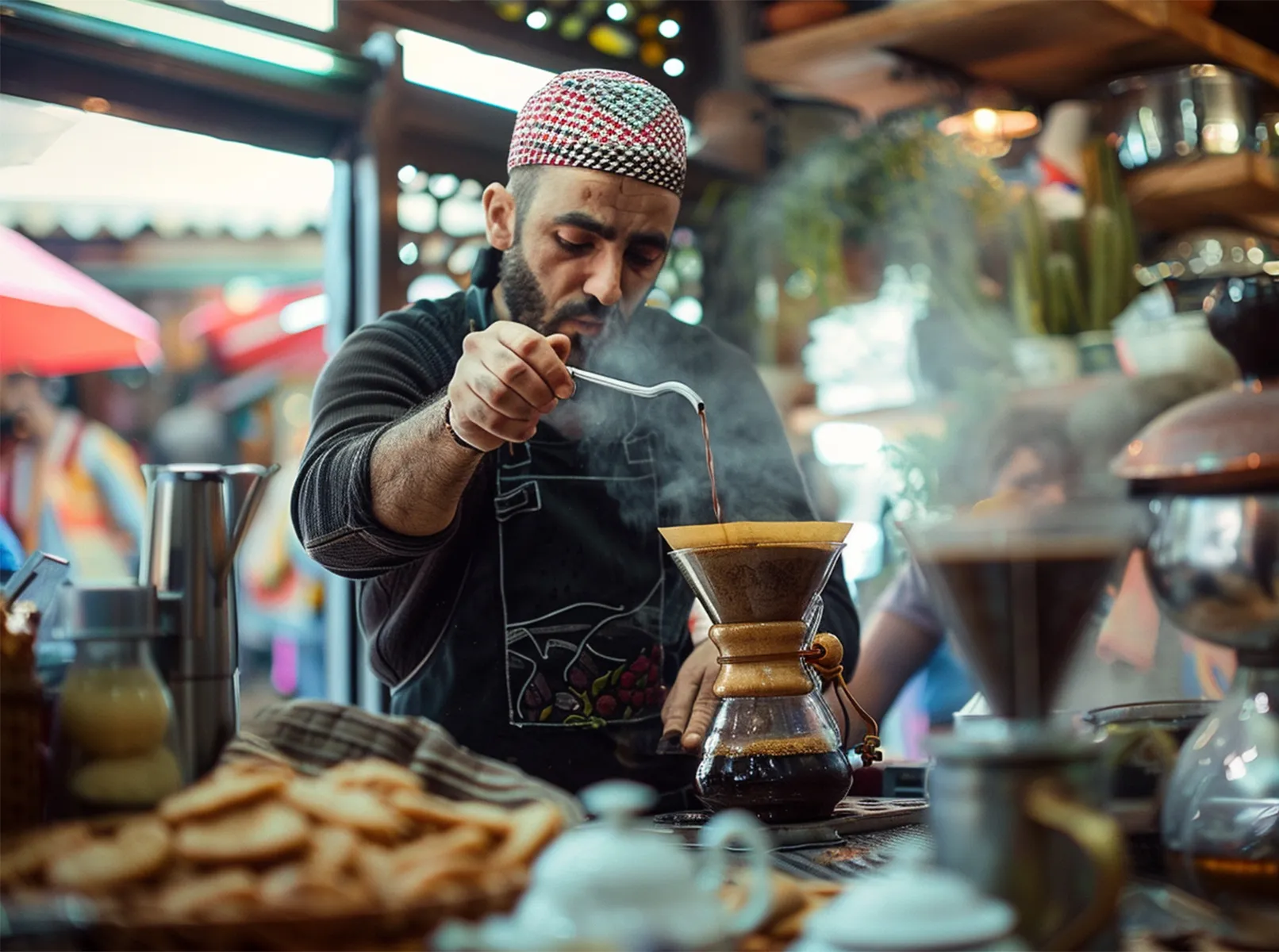
The Chemex is a method that provides a clear and pure coffee flavor. Hot water is poured through coffee beans in a special cone and then passed through a filter. The Chemex was developed in Japan in 1941 to prepare coffee with its natural taste and aroma.
Advantages: Clear taste, preservation of flavor.
Disadvantages: Requires careful temperature control, somewhat complicated to use.
Turkish coffee (coffee in a turbo)
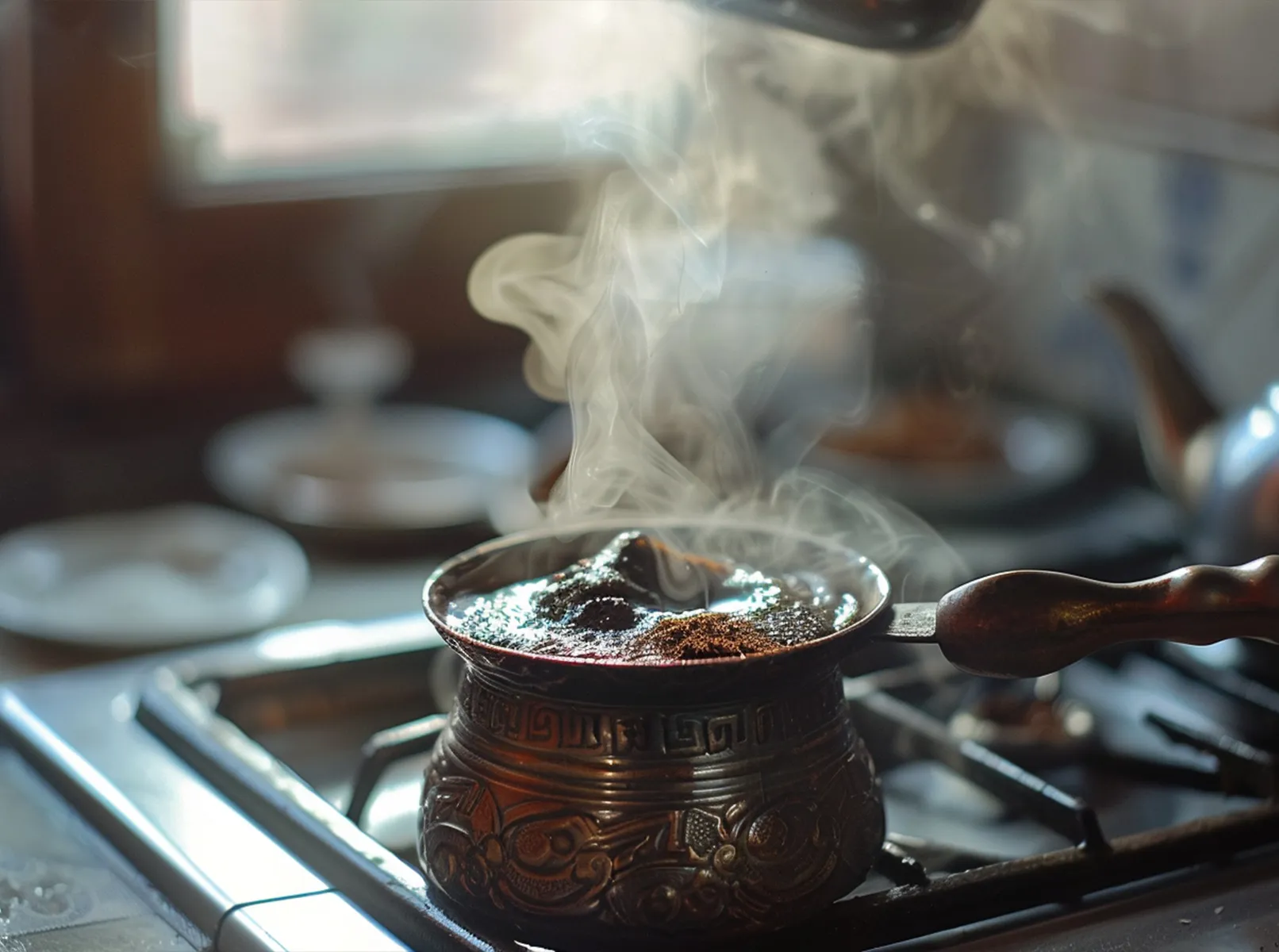
Turkish coffee is one of the oldest and most traditional methods of coffee preparation. The coffee beans are finely ground into powder and brewed in a small amount of water directly in the pot on the stove or another heat source. The coffee is stirred several times and brought to the boil before it is poured into the cup together with the coffee grounds. Turkish coffee has a strong and aromatic taste, and the coffee grounds give it a special character. In fact, the older generation in East Germany still likes to drink Turkish-style coffee today.
Advantages: Intense flavor, easy to prepare, tradition.
Disadvantages: Coffee grounds, longer preparation time.
Espresso pot
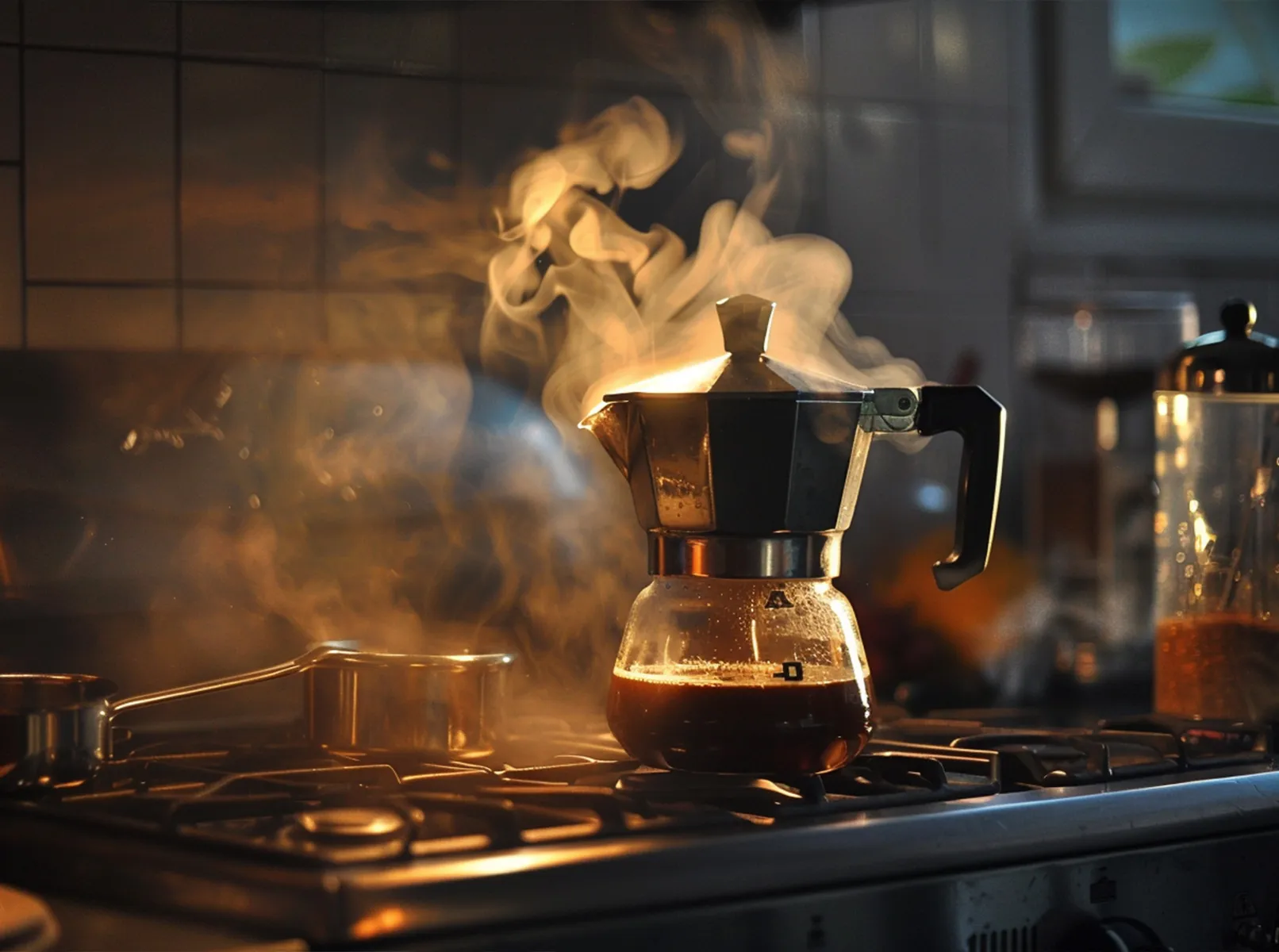
The espresso pot is a method of coffee preparation based on the use of steam pressure. The water is heated in the lower container and then rises through a tube into the upper container, flowing through the coffee beans on its way. It mixes with the coffee aromas and passes through a filter into the upper container. This method was invented at the beginning of the 20th century and is very popular due to its simplicity and the ability to prepare a strong coffee with a rich aroma.
Advantages: Quality of the drink, ease of use, durability.
Disadvantages: Limited choices, regular cleaning required.
History of coffee
Coffee was first discovered in Africa, in Ethiopia to be precise. It was already used as an invigorating drink in ancient times. However, most people only learned about it through traders. During the great voyages of discovery in the 15th and 16th centuries, sailors and traders brought coffee to Europe. Initially, it was only available to the elite and nobility, who enjoyed it at balls and social events. The high price made it affordable only for wealthy people.
Soon coffee conquered the hearts of all social classes. The price fell and it became accessible to the general public. Coffee houses became popular meeting places and venues for the exchange of ideas. They were centers of cultural and social life where people met to discuss business, debate politics or simply chat in a pleasant atmosphere.
By the end of the 17th century, coffee had become an indispensable part of European culture and society. It symbolized alertness, communication and the exchange of ideas. It was integrated into everyday life with enthusiasm and passion.
Interesting facts
At the beginning of its introduction in Europe, coffee was criticized by the Church and was even the subject of discussions in the papal council. Originally, coffee was not only used as a drink, but also as a spice for various dishes. In 17th century recipes, there are mentions of coffee soups and meat dishes with coffee.
Over time, these unusual combinations disappeared, leaving behind only historical anecdotes.
I hope this history and the interesting facts will give you a good insight into the tasty world of coffee.
Templates for menus and coffee cards on TutKit.com
When you walk into a coffee bar, one of the first things you'll notice is the menu. It's not just a list of dishes and drinks, it's your first impression of the place and an important tool when ordering. A well-designed menu helps guests to make a decision and arouse interest in the products on offer.
Menu templates are specialized menu templates that help coffee bars create beautiful, functional and appealing menus. These templates offer different design and structure options so that every coffee bar can find the right style for their unique brand and concept.
Menu templates make it easy to create a menu that reflects the atmosphere of the coffee bar and grabs the attention of guests. This helps to create a menu that is both visually appealing and user-friendly.
A properly designed and prepared menu is a key element to the success of a coffee bar. On our portal TutKit.com you will find specially designed coffee menus that will help your coffee bar to create a unique and attractive menu that will attract visitors and keep them interested in the products.
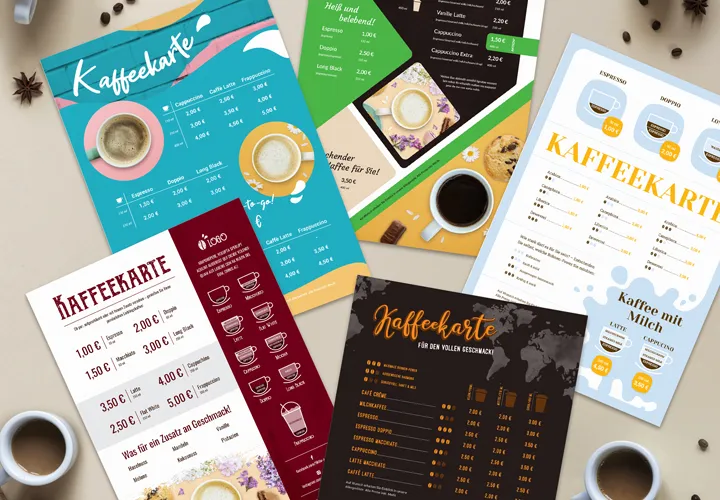
Our Tutkit.com portal is the digital place to find templates for your café
On the Tutkit.com portal, you'll find the ideal helper for your business. We offer a variety of menu templates for every taste and need. Here are some of the benefits we can offer you:
- Wide range of templates: we have an extensive selection of templates for different business needs. No matter what style or theme you need, you'll find the perfect design with us.
- Wide range of editing options: Our templates support various editing methods, making the process of creating and customizing your menu even more convenient and efficient.
- Video tutorials for support: We offer video tutorials that explain the basic elements of editing in detail. You'll quickly familiarize yourself with our templates and be able to create the perfect menu for your business.
Our templates are so user-friendly that you'll be up and running faster than it takes to brew a cup of coffee. At Tutkit.com, you'll find specially designed coffee menus to help you create a unique and attractive menu that will wow your guests. We are always ready to help you make your business a success.
